EMPLOYMENT IN THE MARKET ECONOMY IN ... - Eurostat - Europa
EMPLOYMENT IN THE MARKET ECONOMY IN ... - Eurostat - Europa
EMPLOYMENT IN THE MARKET ECONOMY IN ... - Eurostat - Europa
You also want an ePaper? Increase the reach of your titles
YUMPU automatically turns print PDFs into web optimized ePapers that Google loves.
Chapter 3 — Labour costs and value-added<br />
The aim here is, first, to examine the variation in average<br />
labour costs per employee both between sectors and<br />
across the enlarged EU and, secondly, to relate average<br />
labour costs to value-added per person employed, or<br />
productivity.<br />
Industry<br />
Average annual labour costs<br />
In the EU15, annual labour costs per employee in industry<br />
were highest in Belgium, Germany, the Netherlands, Austria<br />
and Sweden in 2001, in all cases, close to or just over<br />
40 thousand euros per employee. They were lowest in<br />
Portugal at only 13 thousand euros per employee. In the<br />
EU15 countries together, they averaged some 35 thousand<br />
euros (30 thousand euros in EU25) (Table 24).<br />
In the new Member States, they were just under half the<br />
EU15 average in terms of euros in Cyprus (on the basis of<br />
the data available for manufacturing), Malta and Slovenia<br />
(in the last, much the same as in Portugal). In the other<br />
new Member States, they were only around a quarter or<br />
less of the EU15 average, again in euro terms. (It should<br />
be noted that the figures adjusted to purchasing power<br />
parity terms would give a better indication of the true cost<br />
of labour.) In Bulgaria and Romania, labour costs were<br />
under 10% of the EU15 average.<br />
Labour costs in manufacturing were much the same or<br />
slightly higher than in industry as a whole, while in mining,<br />
Adjusting labour costs for the self-employed<br />
An allowance needs to be made for the self-employed<br />
when computing labour costs in order both to give an accurate<br />
indication of their scale and to improve the comparability<br />
of the data across sectors of activity and<br />
Member States. The assumption made is that the earnings<br />
of the self-employed are the same as those of employees,<br />
which is the most neutral assumption to make in<br />
the absence of data. The scale of the adjustment, therefore,<br />
varies in proportion to the share of the self-employed<br />
in the work force (ie making no allowance for the<br />
self-employed tends to understate labour costs by a<br />
larger amount the greater the number of self-employed<br />
relative to employees).<br />
The adjustment in question is relatively small in most Member<br />
States in respect of manufacturing where those recorded<br />
as self-employed in the SBS data represented only<br />
around 6% of the work force in the EU15 in 2001. It is, however,<br />
larger in construction where 18% of those in work<br />
were self-employed. The proportion in manufacturing varied,<br />
however, from only around 1% in Luxembourg to 17%<br />
in Italy. In the new Member States, it varied from under<br />
0.5% in Latvia, Slovakia and Hungary (in the last two reflecting<br />
the incomplete data on small firms) to 10% in the<br />
Czech Republic. In market services, on the other hand, the<br />
adjustment required is much larger since some 16% of the<br />
total in the work force in the EU15 were self-employed in<br />
2001 according to the SBS. This proportion varied from<br />
only around 6% in France to 23% in Spain and 45% in Italy.<br />
In the new Member States and candidate countries it varied<br />
between 1% in Latvia to 28% in the Czech Republic,<br />
though in most countries, it was under 10%, apart from in<br />
Malta (25%). It was also high in Bulgaria (32%), while in Romania,<br />
it was 10%.<br />
Unit labour costs — and the share of labour in value-added<br />
— can, therefore, be estimated by the equation:<br />
(Total employed/Employees) x (Labour costs/Value-added)<br />
which can be rearranged as:<br />
(Labour costs/Employees)/(Value-added/Total employed)<br />
which is equivalent to the ratio of average labour costs per<br />
employee to labour productivity, expressed in terms of the<br />
number employed rather than hours worked.<br />
47


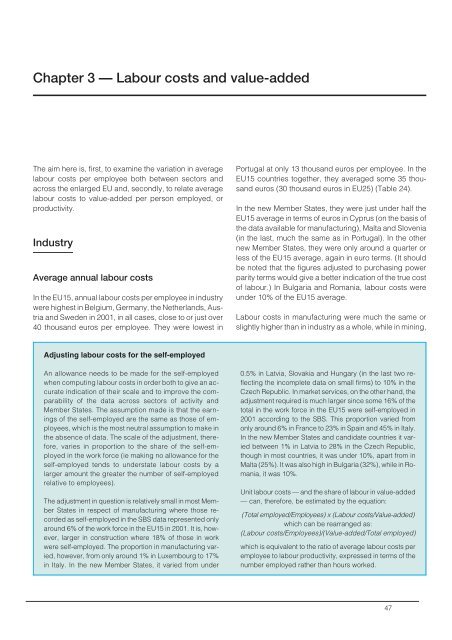
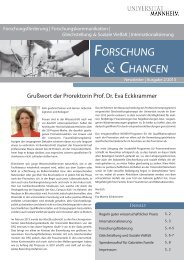
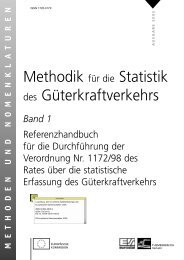
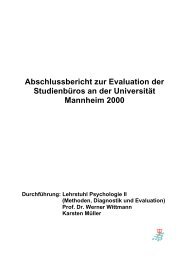
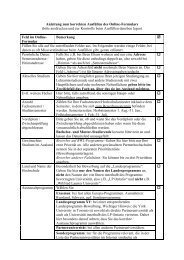

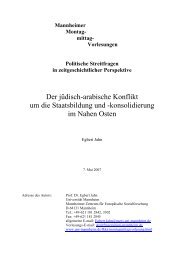
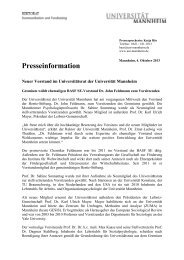


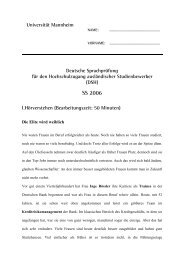
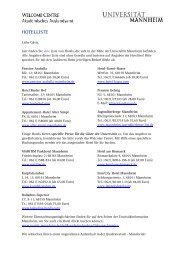
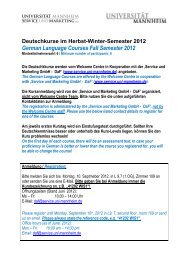
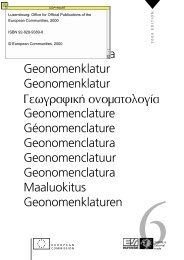
![226. [Augsburg], 27. Oktober 1562 An Joachim Camerarius d. Ã ...](https://img.yumpu.com/27559109/1/184x260/226-augsburg-27-oktober-1562-an-joachim-camerarius-d-a-.jpg?quality=85)